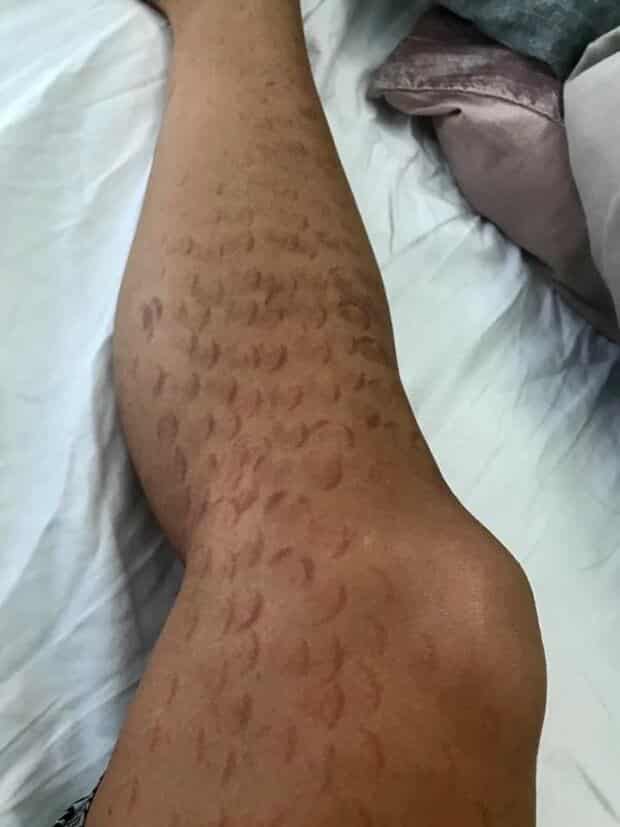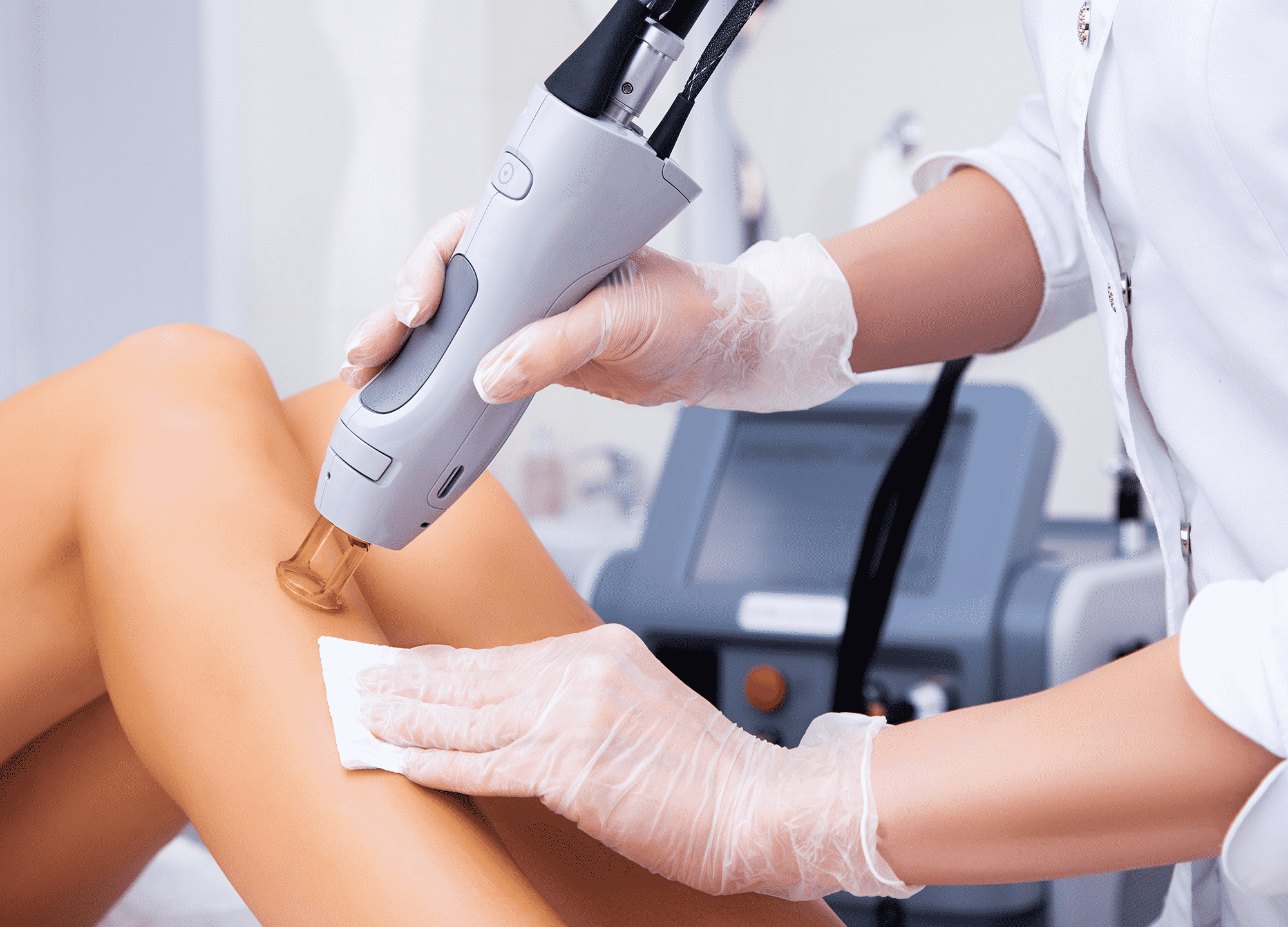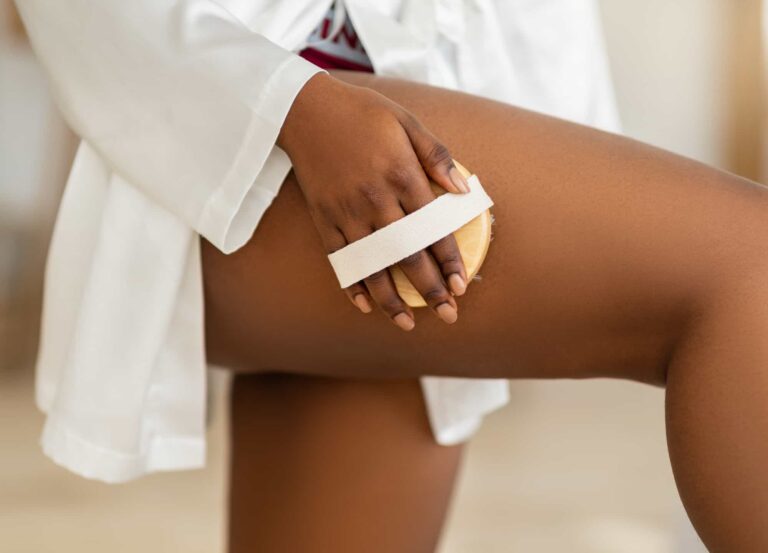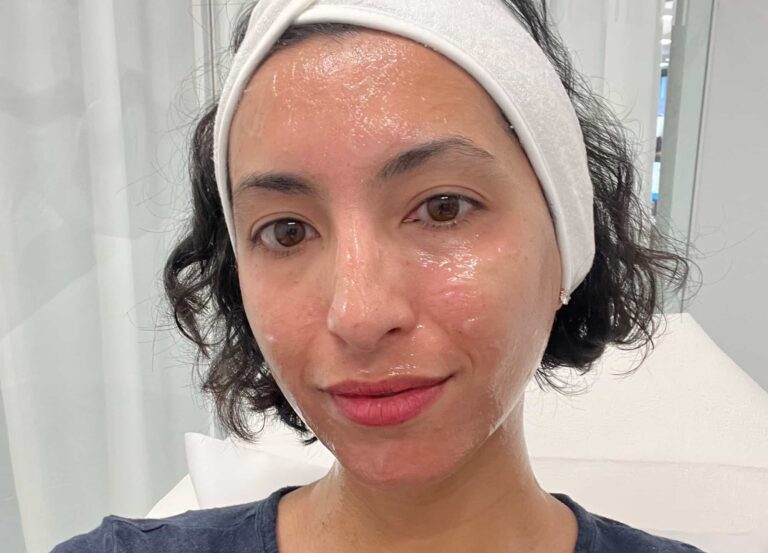When done right, laser hair removal can be a game changer. As a seemingly simple way to ditch your razor for good, it can help you save time (no more shaving in the shower!) and money (no need to buy razors or get waxed!). But for one woman in Vancouver, Canada, the treatment didn’t change her life for the better. In fact, she’s been left scarred and regretful.
Danielle Nadeau, 28, chose Ideal Image—a popular medical spa that offers procedures like fillers and lasers—to perform $7,000 worth of laser hair removal on her legs and her groin area. However, during her eighth session, she experienced pain that was more severe than she had ever felt before during the treatment—clearly, something was wrong.
“It was to the point where I was biting my fist,” said Nadeau in an interview with CBC News, adding that she reported the pain to the technician but was told to simply return if the pain continued post-treatment.
Related: 5 pro tips for a smoother laser hair removal experience
“By the time I got home, it literally felt like I was standing in boiling oil. It was so painful,” Nadeau explains. “[My skin] was red and almost puffy, like you would expect from a burn.”

Courtesy of Danielle Nadeau via CBC News
While rare, it is possible to get a burn from laser hair removal. The treatment—which uses light energy to target the pigment within the hair and permanently damage the follicle—is pretty effective at reducing hair growth. It even has a 96% Worth It Rating on RealSelf. But when done incorrectly, it can result in burns, irritation, or even scarring.
“In the wrong hands, a relatively simple procedure can produce devastating complications,” warns Houston dermatologist Dr. Paul Friedman. “Proper cooling, wavelength, and pulse-duration selection are all critical for hair removal to be selective for the targeted follicle and to prevent excessive thermal damage to the surrounding skin.”
Also important: treatment appropriate for different skin tones. Since the laser specifically targets pigment, it’s possible for the laser to overheat dark skin in addition to the hair follicles during treatment, resulting in burns. While many lasers use a cooling system to reduce the surface temperature of the skin and help prevent excessive heating, damage can still occur if the incorrect wavelength is used.“If someone is tan or naturally dark, a longer-wavelength laser would be needed to prevent surface heating,” says New York City dermatologist Dr. Leonard Bernstein of the Laser & Skin Surgery Center of New York. “Dark skin tones are more prone to pigment complications [like discoloration], especially after laser procedures, so selecting an expert physician is especially important,” adds Dr. Friedman.
Related: 5 At-Home Devices That Actually Make a Difference in Your Skin and Hair, According to Doctors
Nadeau—who still suffers from hypopigmentation on her legs and groin five months post-procedure—says this was the case with her treatment. Nadeau is suing Ideal Image Group of Canada and the unnamed technician, claiming that her injuries were caused because the technician did not correctly assess Nadeau’s skin tone and therefore used the wrong intensity and duration of energy during her treatment.
In order to avoid this, Dr. Bernstein reminds us to do extensive research pre-treatment. “Research the center and experience of the individual who is performing the procedure,” he explains. “Preferably be seen by a board-certified [doctor] who has laser experience.”But if this does happen to you, Dr. Friedman recommends immediately following up with your physician to have them examine the area. Also, apply cool compresses for 10 minutes every hour, as needed, and spread Aquaphor Healing Ointment ($14) or Alastin Soothe + Protect Recovery Balm ($40) onto minor burns as directed by your physician. However, if blistering develops, this is a sign of a more severe burn and should be treated by a doctor—not at home.











